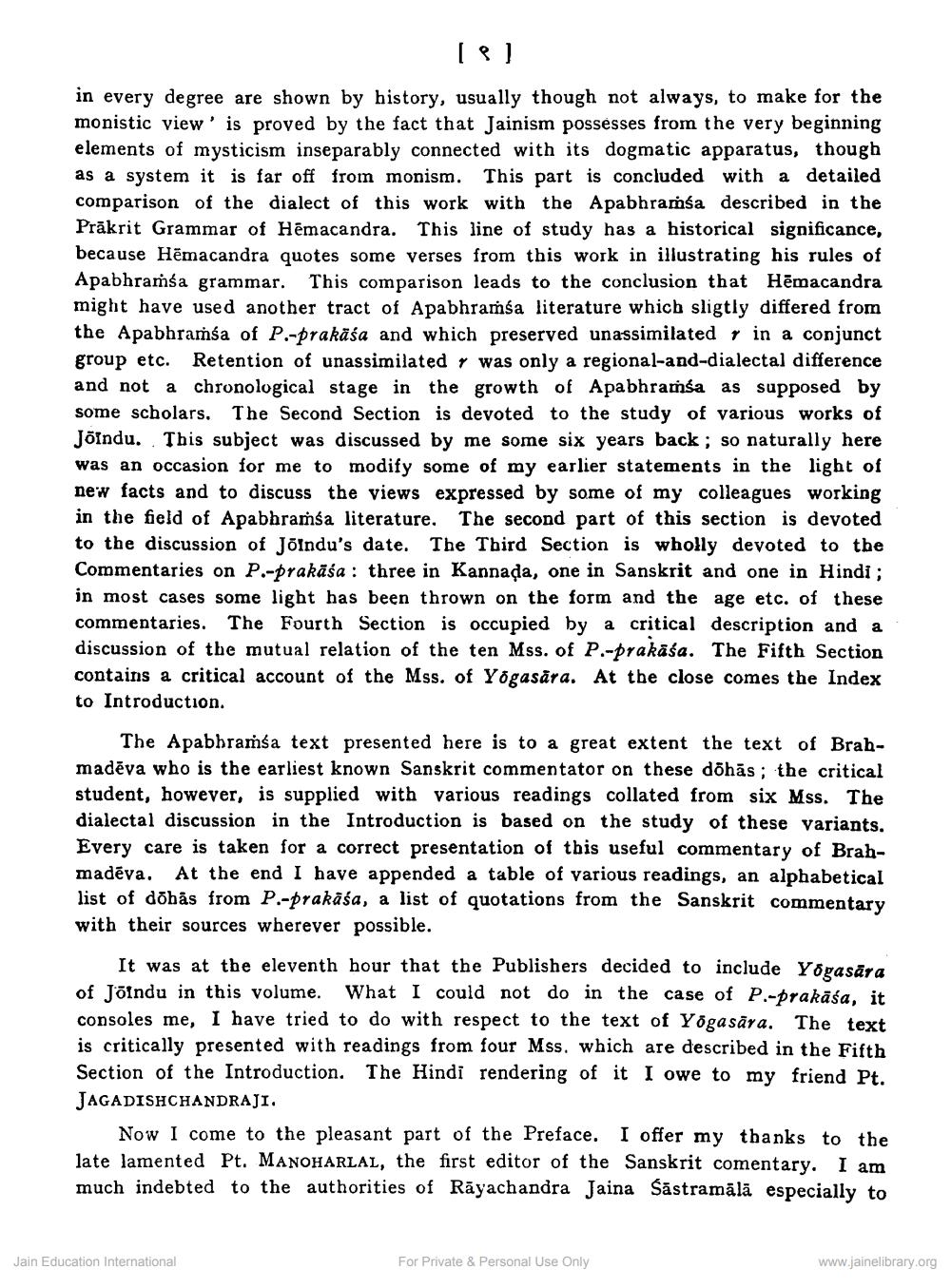________________
18]
in every degree are shown by history, usually though not always, to make for the monistic view' is proved by the fact that Jainism possesses from the very beginning elements of mysticism inseparably connected with its dogmatic apparatus, though as a system it is far off from monism. This part is concluded with a detailed comparison of the dialect of this work with the Apabhramśa described in the Prākrit Grammar of Hēmacandra. This line of study has a historical significance, because Hēmacandra quotes some verses from this work in illustrating his rules of Apabhramśa grammar. This comparison leads to the conclusion that Hēmacandra might have used another tract of Apabhramsa literature which sligtly differed from the Apabhramśa of P.-prakāśa and which preserved unassimilated, in a conjunct group etc. Retention of unassimilated , was only a regional-and-dialectal difference and not a chronological stage in the growth of Apabhramśa as supposed by some scholars. The Second Section is devoted to the study of various works of JÕindu. This subject was discussed by me some six years back; so naturally here was an occasion for me to modify some of my earlier statements in the light of new facts and to discuss the views expressed by some of my colleagues working in the field of Apabhramśa literature. The second part of this section is devoted to the discussion of Joindu's date. The Third Section is wholly devoted to the Commentaries on P.-prakāśa : three in Kannada, one in Sanskrit and one in Hindi ; in most cases some light has been thrown on the form and the age etc. of these commentaries. The Fourth Section is occupied by a critical description and a discussion of the mutual relation of the ten Mss. of P.-prakāśa. The Fifth Section contains a critical account of the Mss. of Yogasära. At the close comes the Index to Introduction.
The Apabbraṁsa text presented here is to a great extent the text of Brahmadēva who is the earliest known Sanskrit commentator on these dõhās; the critical student, however, is supplied with various readings collated from six Mss. The dialectal discussion in the Introduction is based on the study of these variants. Every care is taken for a correct presentation of this useful commentary of Brahmadēva. At the end I have appended a table of various readings, an alphabetical list of dobás from P.-prakāśa, a list of quotations from the Sanskrit commentary with their sources wherever possible.
It was at the eleventh hour that the Publishers decided to include Yogasāra of Jölndu in this volume. What I could not do in the case of P.-prakāśa, it consoles me, I have tried to do with respect to the text of Yogasära. The text is critically presented with readings from four Mss. which are described in the Fifth Section of the Introduction. The Hindi rendering of it I owe to my friend Pt. JAGADISHCHANDRAJI.
Now I come to the pleasant part of the Preface. I offer my thanks to the late lamented Pt. MANOHARLAL, the first editor of the Sanskrit comentary. I am much indebted to the authorities of Rāyachandra Jaina Sastramālā especially to
Jain Education International
For Private & Personal Use Only
www.jainelibrary.org




